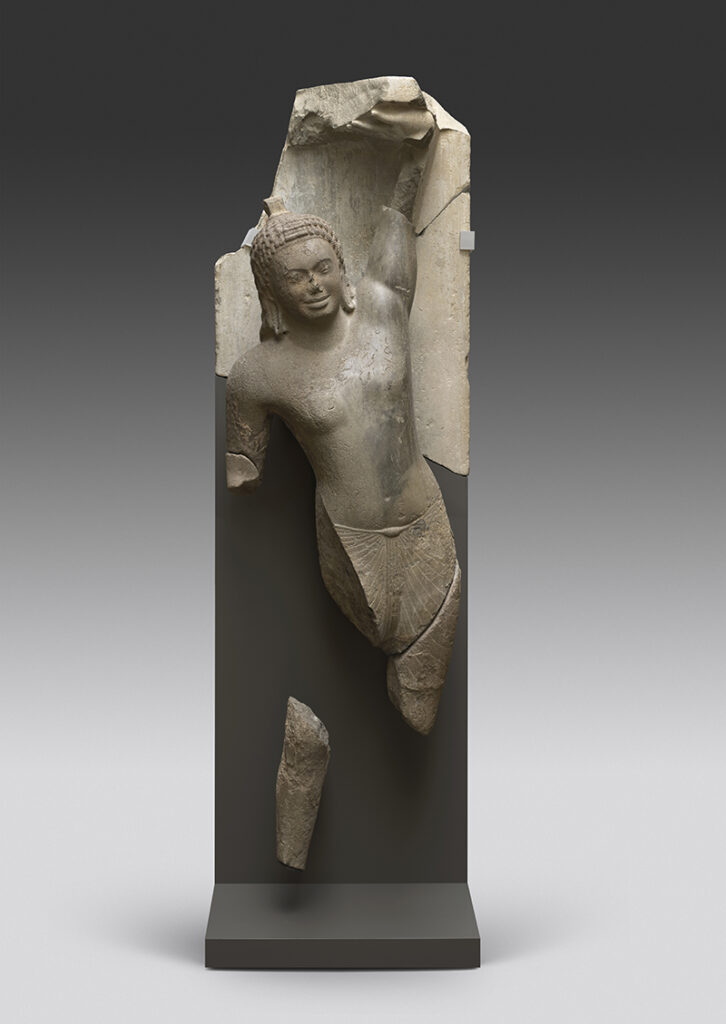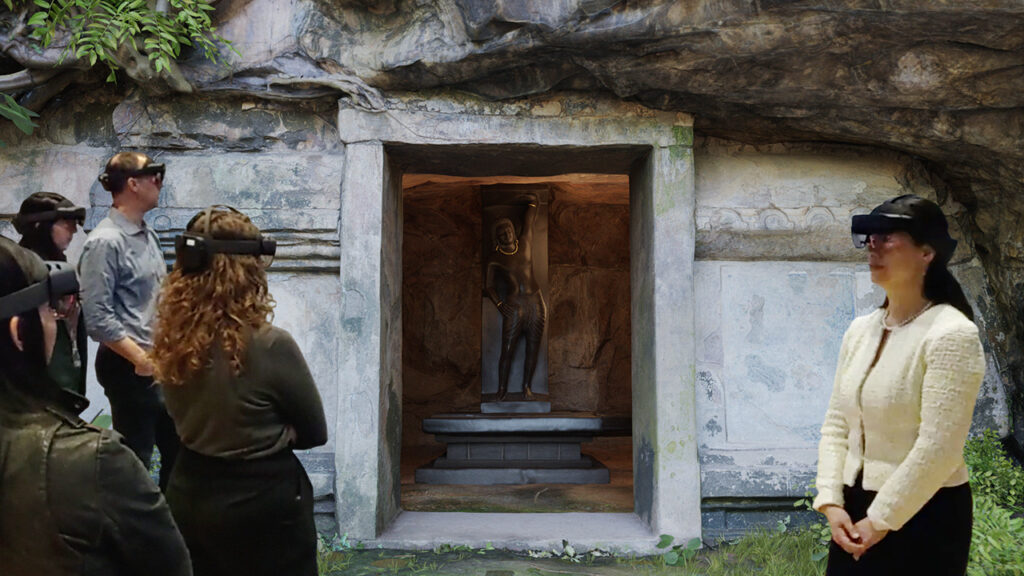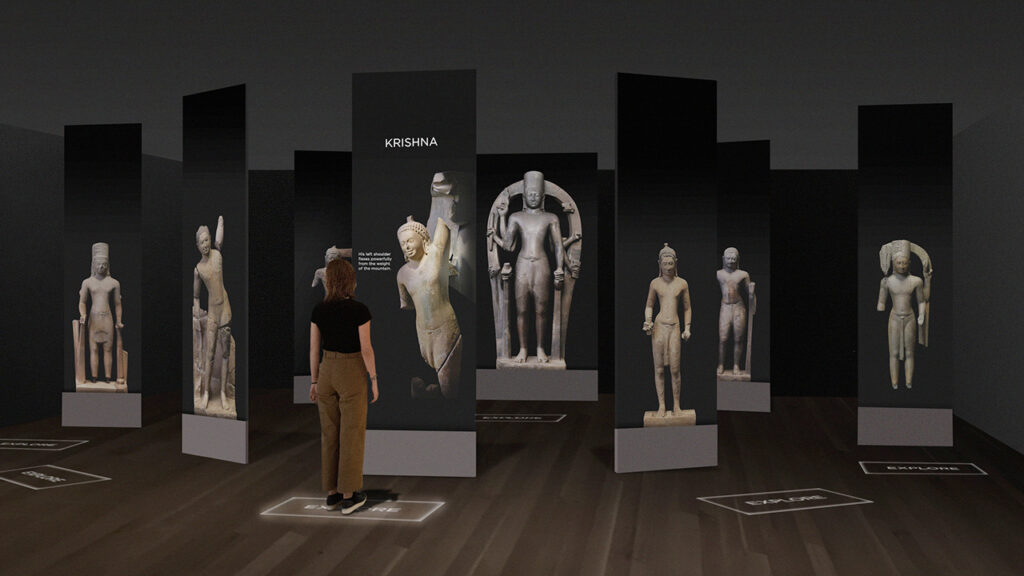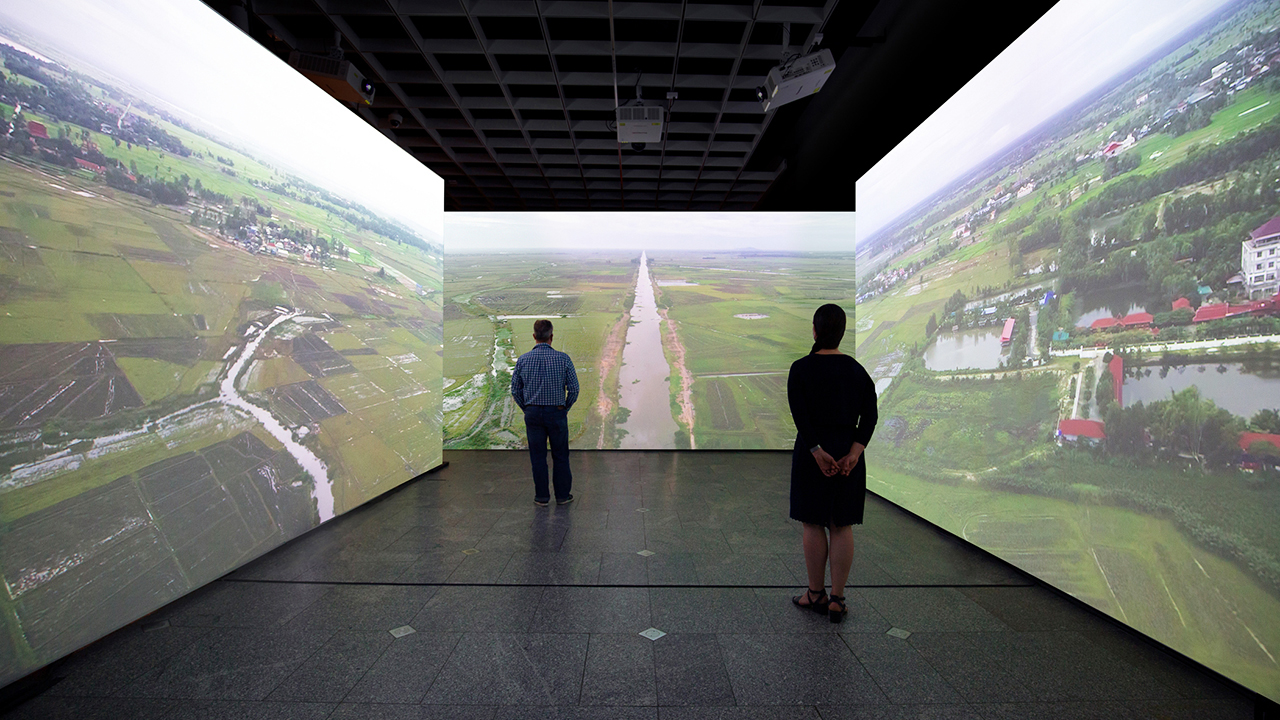The sixth century sculpture at the center of the Cleveland Museum of Art’s (CMA) latest exhibition boasts a provenance of textbook colonial looting. The larger-than-life sandstone depiction of Krishna shielding villagers from a tempestuous god was anonymously cut from its Phnom Da cave in southern Cambodia in the late 1800s, arriving on the European auction block in 1920 via an unscrupulous French sailor and the eye of famed Parisian art dealer Léonce Rosenberg.

“Krishna Lifting Mount Govardhan” after 2020 restoration. Image: The Cleveland Museum of Art
The Stoclet family took to the limbless Krishna, shelling out close to $1 million in modern money for a statue they called “the dancing prince” on account of its prominent position in the music salon of their Brussels mansion. The Cambodian sculpture remained in the Stoclet’s collection, surviving generations, a relocation to Barcelona, and failed attempts to reunite it with its legs, before being sold to CMA in 1973.
Revealing Krishna: Journey to Cambodia’s Sacred Mountain, which runs from November 14 to January 30, 2022, not only retraces this global story, but seeks to return the newly restored work to the Cambodian landscape in which it was carved by master sculptors 1,500 years ago. To do so, CMA embraces a suite of immersive technological tools and presents Krishna alongside sister sculptures from Phnom Da, lent from the National Museum of Cambodia and the Guimet Museum in Paris.
At a moment when scrutiny is returning to the troubled encyclopedic collections of museums in the Global North, CMA is faithful to the work’s original site and region, and eager to focus on the collaborative nature of the project. The show is the product of longstanding relationships with the National Museum of Cambodia and the Angkor Borei Museum, one mediated through email, Messenger, and Zoom once COVID-19 made travel impossible.
“The sculpture is no longer solely placed on a pedestal to be admired for its formal qualities and aesthetic beauty,” Sonya Rhie Mace, CMA’s Indian and Southeast Asian Art Curator, tells Jing Culture & Commerce. “It’s being integrated by means of immersive digital experiences and strategic loans into the landscape of southern Cambodia.”

The mixed reality experience, “The Story of the Cleveland Krishna,” includes a life-sized holographic representation of the cave temple on Phnom Da that originally housed the Krishna statue. Image: Digital rendering by the Cleveland Museum of Art
Before encountering the sculptures themselves, visitors travel to the floodplains of the Mekong River Delta in a panoramic gallery of vast video projections accompanied by the sounds of modern-day rural Cambodia, both captured on location in 2019. The immersive journey continues in a mixed reality tour courtesy of Microsoft’s HoloLens 2 headsets which tie in spatial audio en-route to explain the myth of Krishna protecting the people of Braj and the sculpture’s broader history.
“Using mixed reality allowed us to create a 12-minute tour telling the sculpture’s complete story,” says Jane Alexander, Chief Digital Information Officer at CMA, keen to stress its advantages over a virtual reality experience. “You can still interact with people and maneuver through space; it offers a seamless blend of physical and virtual.”

The virtual exhibition is rounded off with a showcase of 3D models of the eight gods of Phnom Da, complete with motion-activated animations. Image: Digital rendering by The Cleveland Museum of Art
The culmination of this digital magic is a gallery where 3D models of the eight gods of Phnom Da are projected on individual scrims and brought to life with motion-activated animations. Visitors then see the newly restored and reunited Krishnas, accompanied by three equally large sculptures originating from Phnom Da.
Here, CMA builds off its phygital pedigree, perhaps first showcased by the ARTLENS Gallery it launched in 2012, working with a range of partners with niche digital expertise the in-house team lacked: design studio Dome Collection worked on the concept phase; Farm 51 took charge of photogrammetry, lidar scanning, and drone capture; and Interactive Commons at Case Western Reserve University help create the mixed reality work on HoloLens 2.
Despite the prominent role of cutting-edge technology, Alexander hopes it’s the monumental gods and Cambodian landscape that take center stage: “We want visitors to understand varied, multifaceted stories within this exhibition easily. I hope visitors leave enthralled with the art, praising the experience without using the word technology.”



